Written by: Donnie Sexton

With my first visit to the Galapagos Islands, I was anxious to experience first-hand what so many of my photographer friends rave about this unique destination off the coast of Ecuador. The Galapagos can be explored in two ways. Land-based trips start on one of four islands that offer accommodations, then you can hook up with local tour companies for day tripping to different islands.
Animals of the Galapagos Islands
Or you can take a multi-day Galapagos cruise in the ocean. I was fortunate to explore this extraordinary place with Ecoventura, a high-end company that focuses solely on experiences in the Galapagos Archipelago with their luxury yacht cruises. This makes for a great way to observe the animals of the Galapagos Islands.
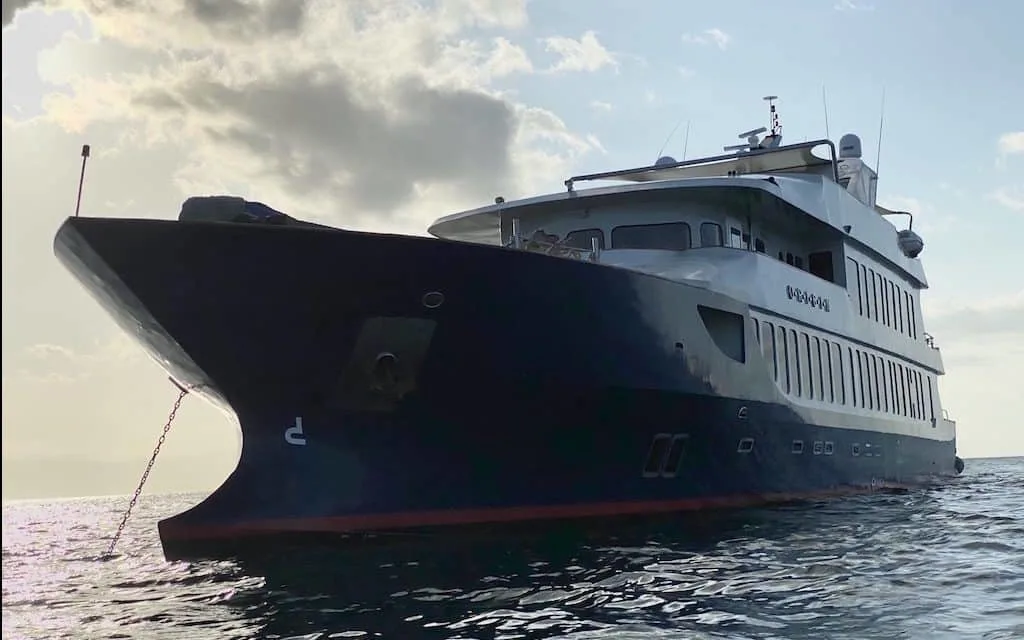
Photo By: Cacinda Maloney of PointsandTravel
Galapagos – An “Out of This World” Experience
In the span of our seven-day cruise, I would witness seven islands – San Cristobal, Española, Floreana, Santa Cruz, Bartolome, South Plaza, and North Seymour. Each of these volcanic islands has unique landscapes and features, all abundant with wildlife. To be able to walk or hike near a variety of creatures without endangering them, was indeed an out of this world experience.
Galapagos National Park
Preservation and protection of this Archipelago is a serious business with the Galapagos National Park, various conservation groups, and the local guides and tour companies who make their living off this Archipelago. The Galapagos National Park sets the schedules for any group that visits its parkland, and they require each group to be accompanied by a guide, which prevents overcrowding. Like all places on earth, the islands have their challenges with pollution, climate change, and invasive species.
Interested in reading other articles about the Galapagos?
Through the Eyes of a Galapagos Gringa
Ecoventura: What Is It Really Like on a Galapagos Cruise?
Post Office Bay, Floreana, Galapagos
Learn the Science behind the Galapagos Islands
Best Time to Visit the Galapagos Islands
Delicious Foods in the Galapagos Islands
Animals In the Galapagos Islands:
Sea Lions & Fur Seals
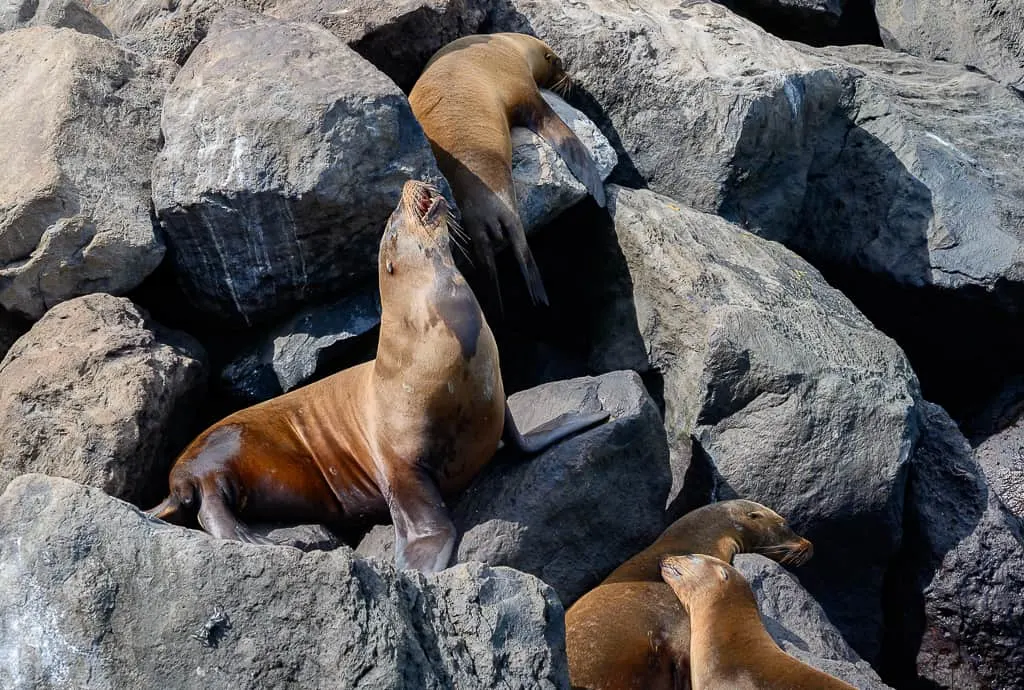
Galapagos Sea Lions
My first encounter with wildlife happened shortly after landing at the airport at San Cristobal Island. It was a short bus ride down to the pier, where we would step into a panga for the short trip out to T •H •E •O •R •Y, our luxury ship. Sea lions were everywhere – a few waddling on the boardwalks, others draped over the rocks along the shore, appearing to be napping. They appeared oblivious to our presence. Sea lions are the most abundant of the marine mammals in the Galapagos. Each stop we made to explore an island, we could count on seeing these delightful creatures.
Marine Iguanas
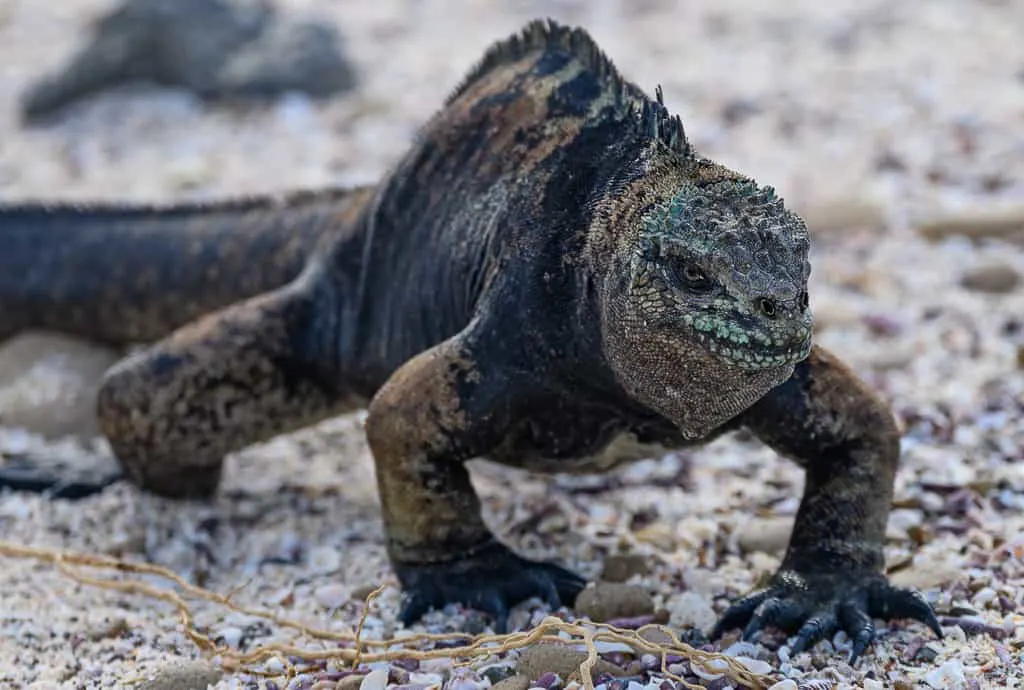
Marine Iguana
I’m feeling very courageous as I pick my path carefully through a field of marine iguanas on Española Island. Thankfully, they aren’t moving, so I keep my distance. I have always had an extreme case of ophiophobia -the fear of snakes. So any creepy-crawly creature with scaly skin gives me cause to tense up. I’m keeping my anxiety in check as I’m surrounded by fellow travelers and have a guide within inches of me.
Also, I’m patting myself on the back for having purchased a long telephone lens for this trip (200-400), so I keep my distance and let the camera do the work of getting in close for shots.
The marine iguanas are typically black, but during mating season, the males change colors to bright red and green. I concur with Charles Darwin’s description of this reptilian creature. “It is a hideous-looking creature, of a dirty black color, stupid, and sluggish in its movements.” This is the only lizard that can swim in the ocean.
Land Iguanas
On the island of North Seymour, I witnessed the yellow-colored land iguana. Both species of iguana are endemic to the Islands.
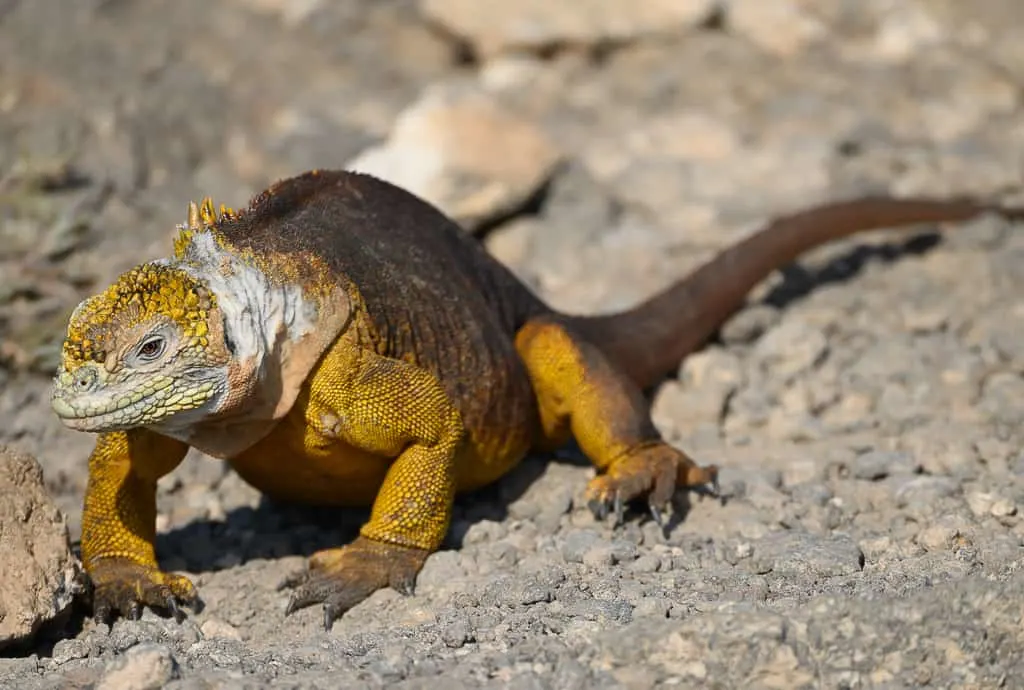
Land Iguana
Giant Tortoises
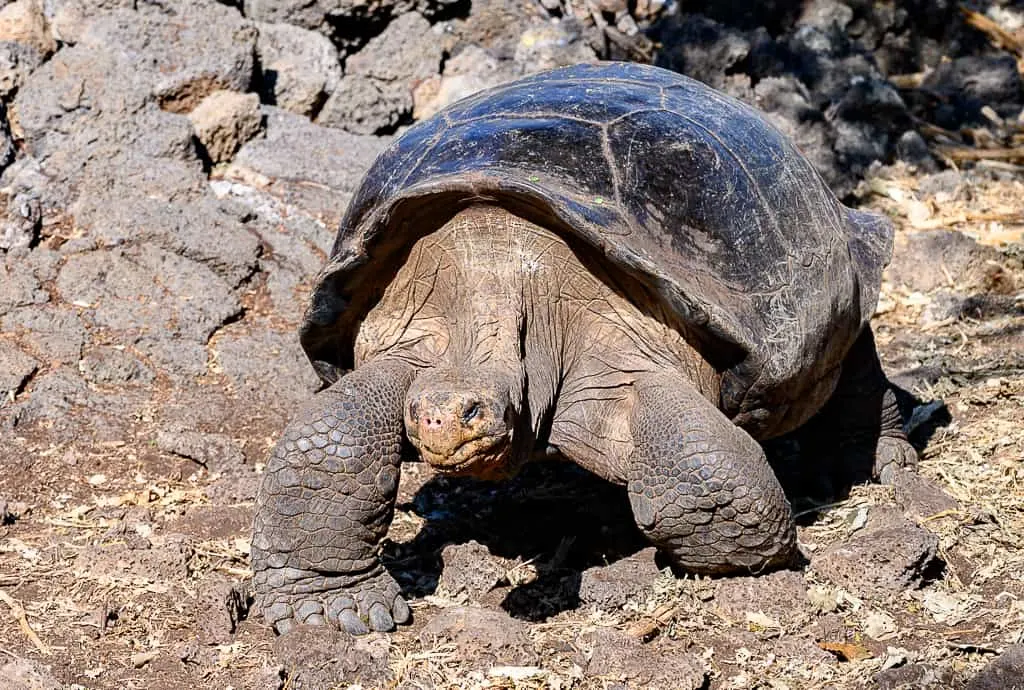
Giant Tortoise
Santa Cruz, the second largest of the islands in the Galapagos, is home to the giant tortoises which are native to the Galapagos. A short bus ride from the main town of Playa Ayora took us into the interior highlands where we wandered through natural reserves of grasslands, ponds, and trees to see these creatures. They can weigh up to 900 lbs., with an average lifespan of 100 years or more. On the outskirts of Playa Ayora, we stopped at the Charles Darwin Research Station, which serves as a breeding center for the giant tortoises and is an excellent resource for telling the story of the islands and their history.
Sally Lightfoot Crab
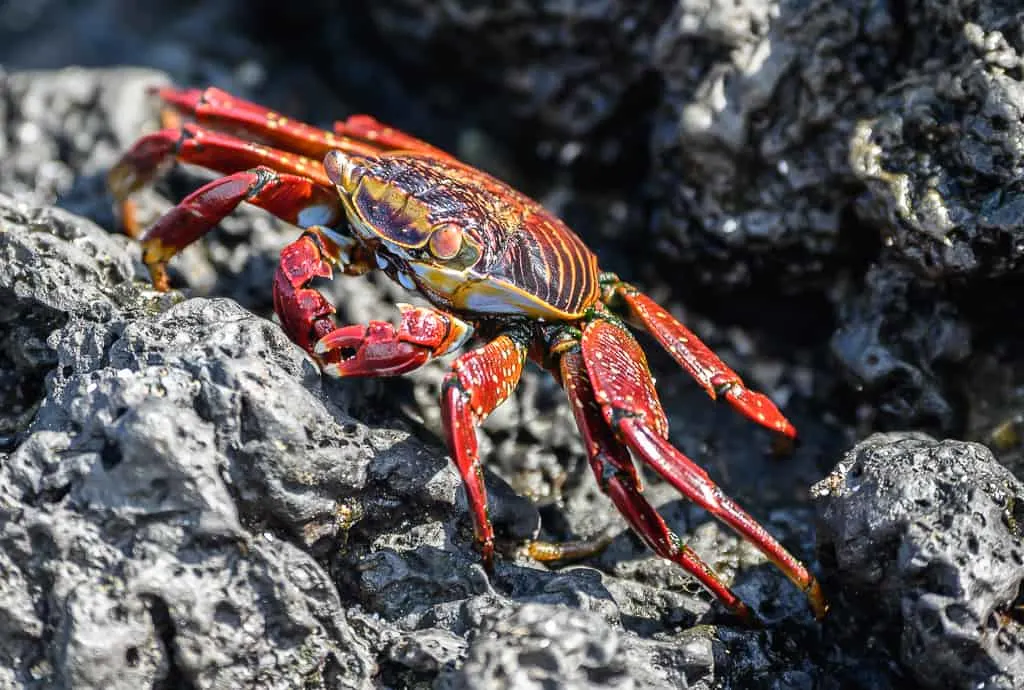
Sally Lightfoot Crab
On the north shore of Santa Cruz, we spent time at Bachas Beach, where some chose to swim, but I became fascinated with trying to photograph the colorful Sally Lightfoot crabs.
Read here a complete article about Galapagos Islands Birds – Birds of a Feather
Galapagos Birds
Galapagos Penguins
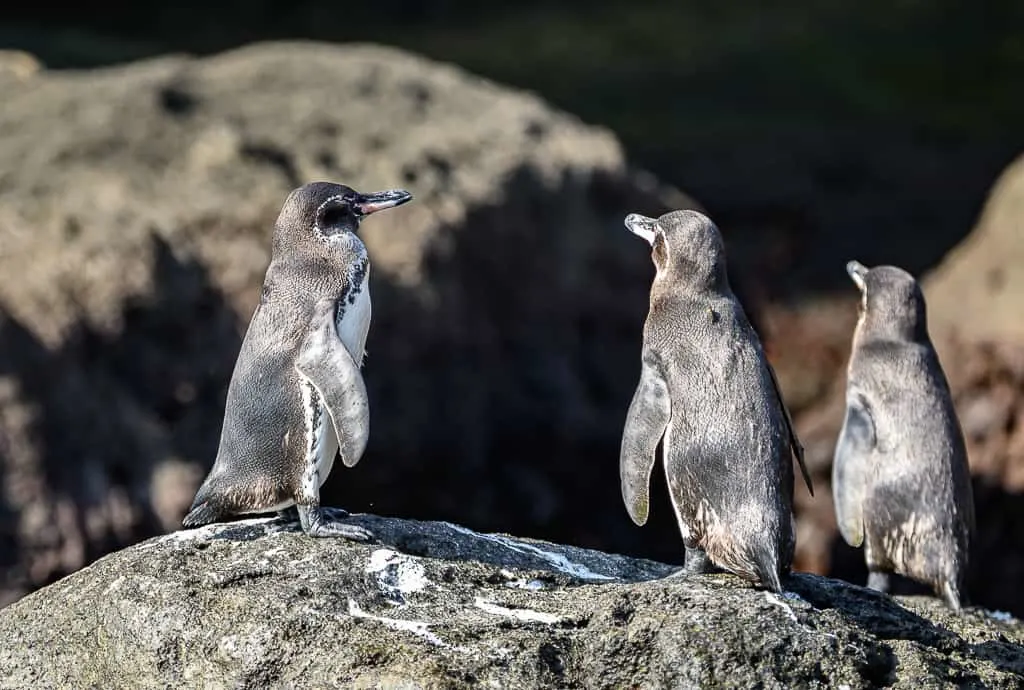
Panga rides along the shores of Bartolome Island enabled us to see the adorable Galapagos penguins, the smallest of all the penguin family, they weight about 5 lbs. 5 oz., but they are about 19 inches tall.
American Flamingos
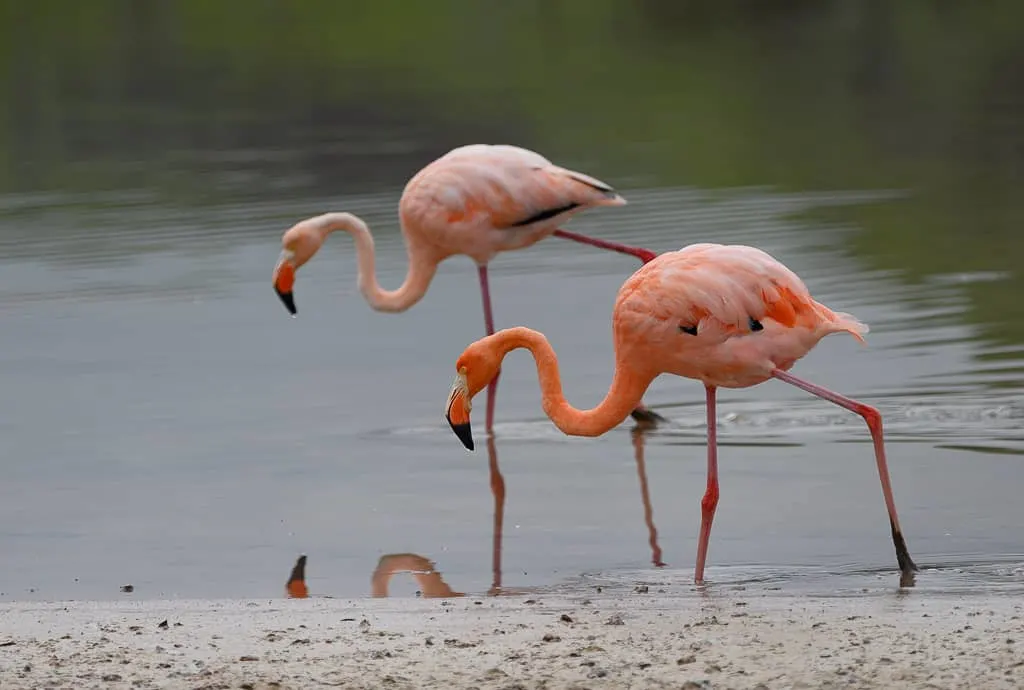
A walk on Floreana Island provided an opportunity to observe the American flamingos that hang out in the lagoons.
Nazca Boobies
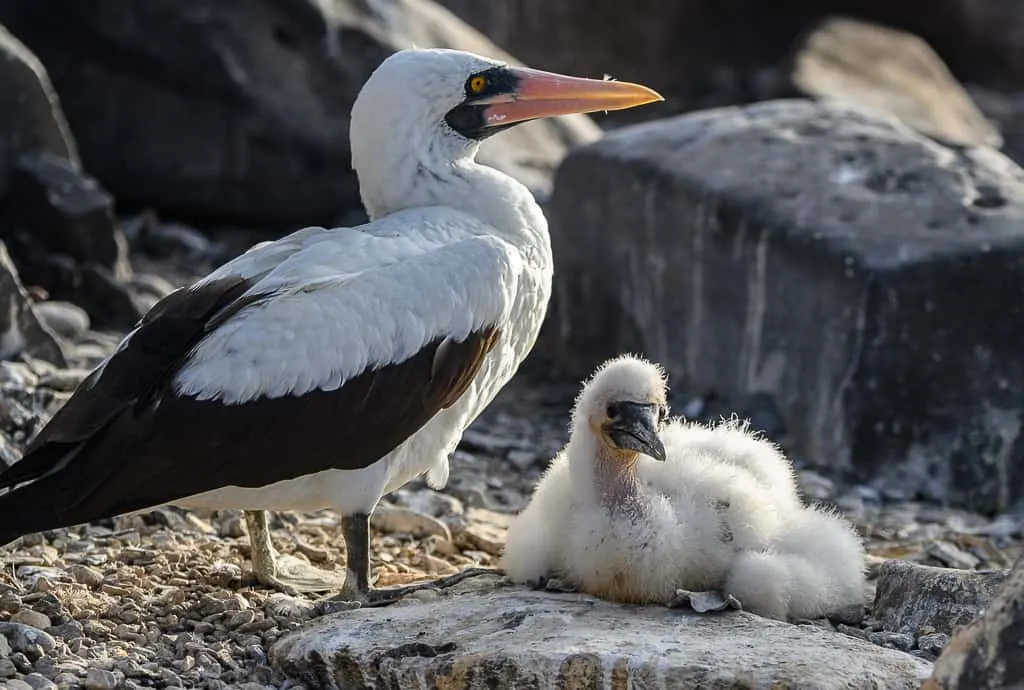
Nazca boobies, many with their young close at hand, were seen in abundance on San Cristobal.
Galapagos Mockingbird
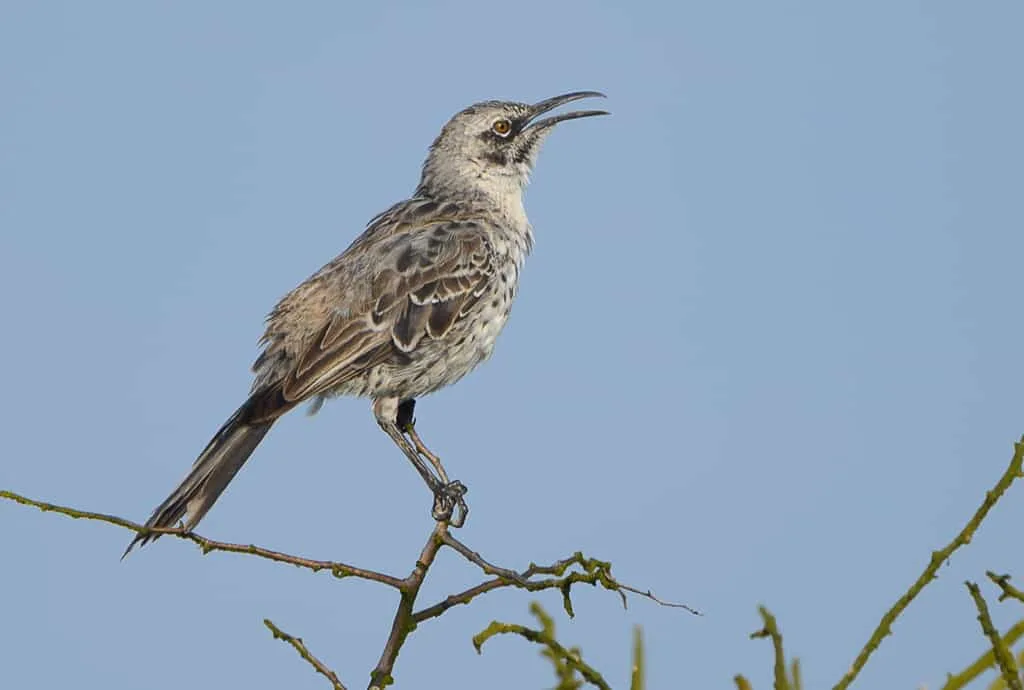
Galapagos Mockingbird
North Seymour Island – An Abundance of Wildlife
Blue-Footed Boobie
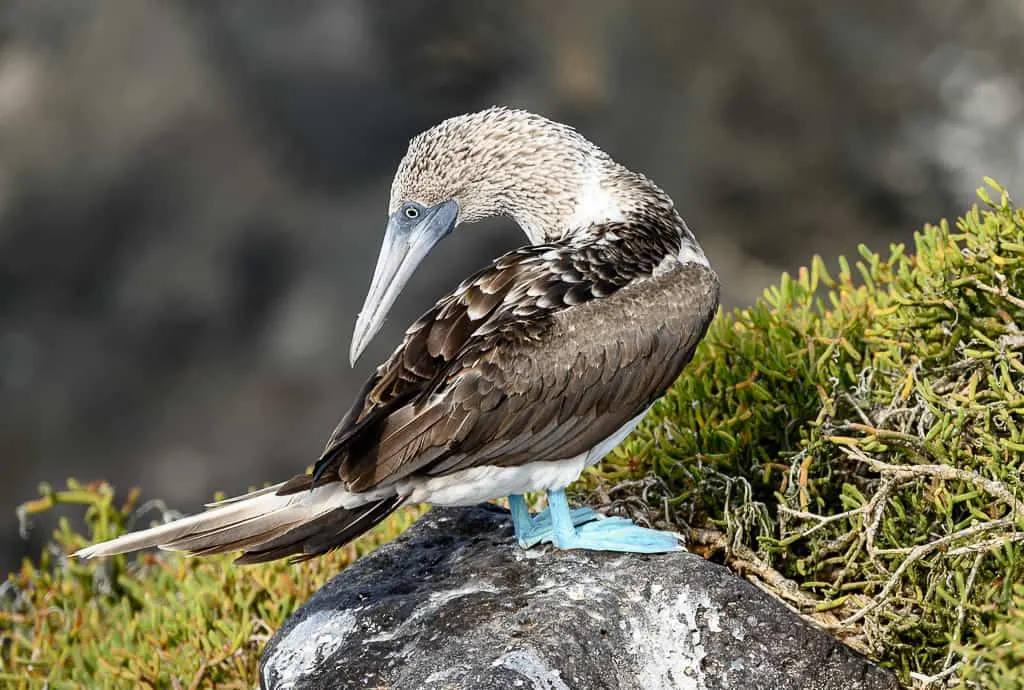
Blue-footed Boobie
My favorite island was North Seymour. First to greet us was the yellow-colored land iguana, munching on prickly pear cactus. The trail led us past Blue-footed boobies and lava lizards.
Lava Lizard
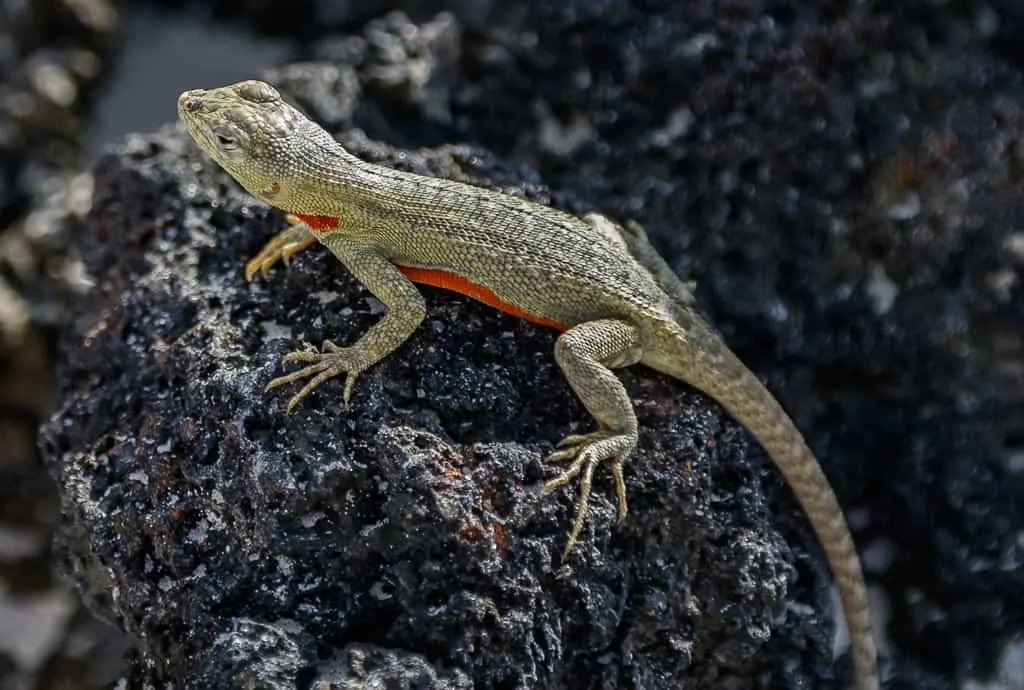
Lava Lizard
Brown pelicans and Swallowtail Gulls were hanging out.
Brown pelicans
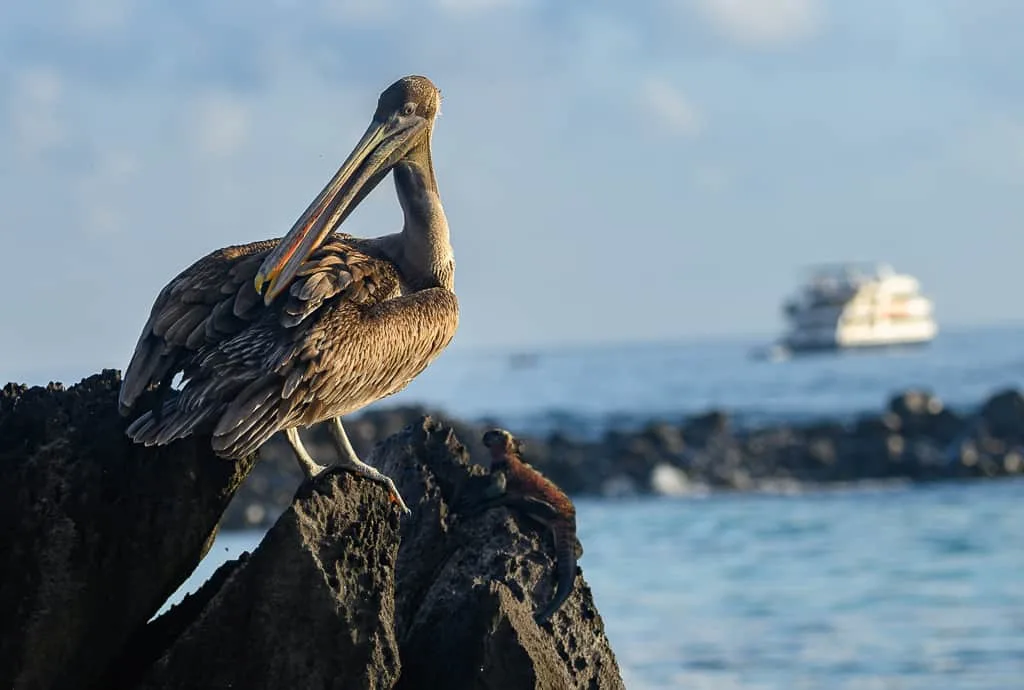
Brown Pelican
Swallowtail Gulls
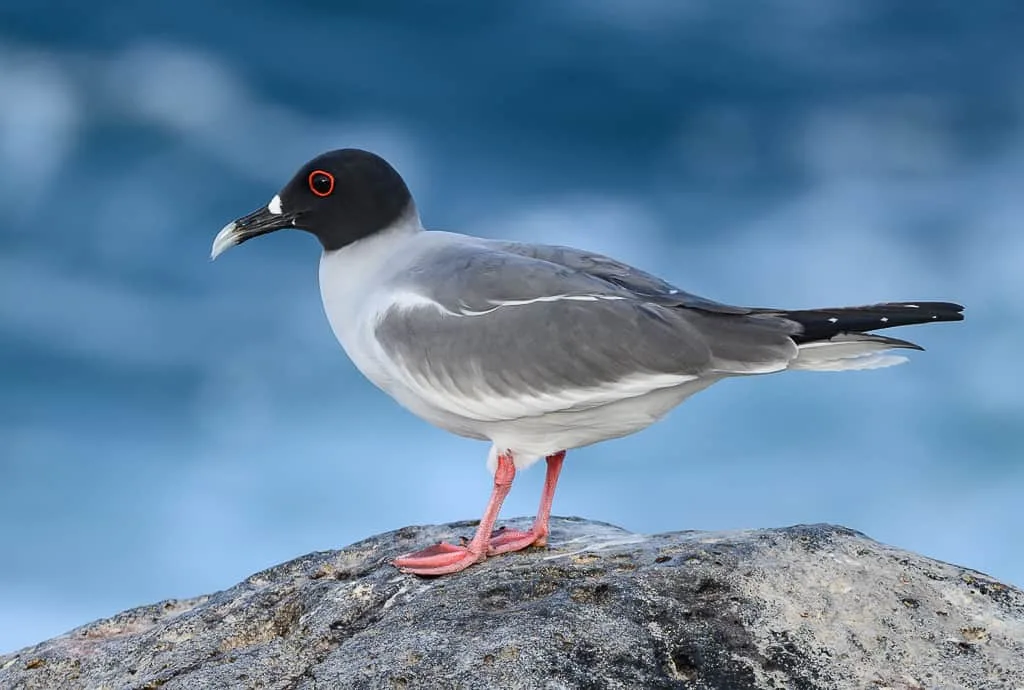
Swallowtail Gull
Magnificent Frigatebirds
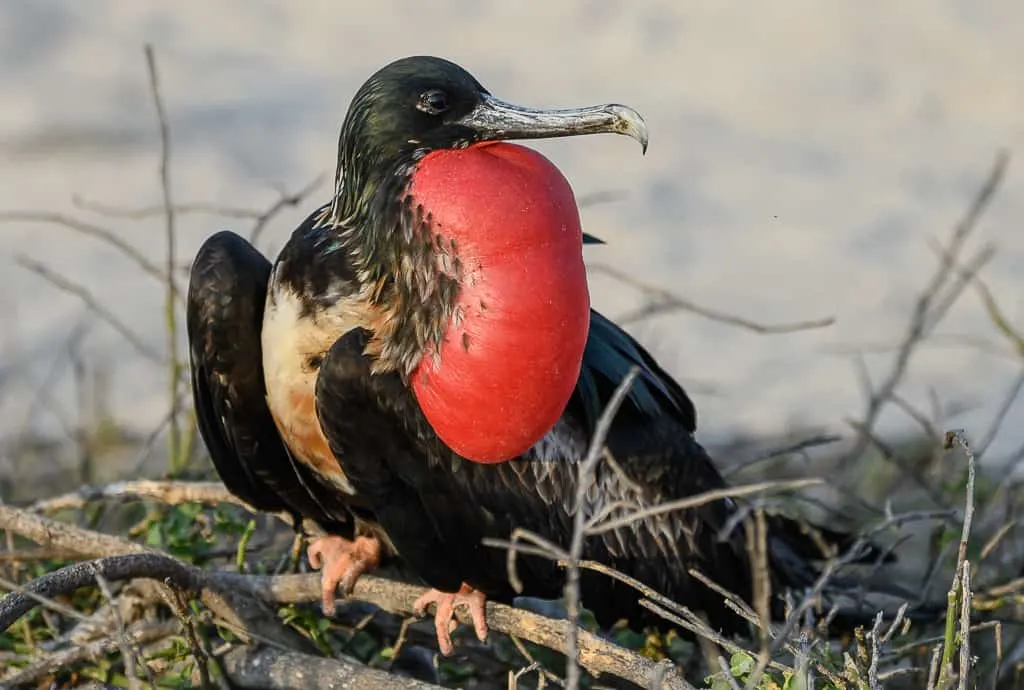
Magnificent Frigatebird
There was an abundance of Magnificent frigatebirds, some in courtship rituals. The males inflate their throat pouches to huge red balloons during the mating season. With their huge wingspan, frigatebirds can glide on thermal air currents for days at a time. Darwin called them ‘the condor of the oceans.’
Galapagos’ Diversity of Animals
By week’s end, I clearly understood why photographers love the Galapagos. The abundance and diversity of wildlife in this volcanic Archipelago is like nowhere on earth. I applaud all of those carefully guarding this treasured place and thank my lucky stars that I was able to experience several of the islands. I have over 2,000 photos to commemorate my visit, now lies the work of sorting and editing.
Interested in reading other articles about Ecuador:
15 Of The Best Things To See & Do in Ecuador
Cuenca, Ecuador – Stepping Back in Time
Chordeleg: A Day Trip from Cuenca
Quito: A Visit to the Middle of the World
City Upon a Hill: Quito, Ecuador
Montanita, Ecuador: Out of My Comfort Zone
Writer Donnie Sexton is now retired but had been with the Montana Office of Tourism for 26 years, splitting her time as a staff photographer and working closely with the media. She is a self-taught photographer. She has an insatiable appetite for travel that she has been documented primarily through her photos. She tells a story behind her images that define a destination or an experience.
Disclosure: As is common in the travel industry, I was provided with accommodations, meals, and other compensation for the purposes of review by Ecoventura. While it has not influenced my review, PointsandTravel.com believes in full disclosure of all potential conflicts of interest. All Photos were taken by the author/or were given permission from the photographer. Affiliate links may be located in this article.

